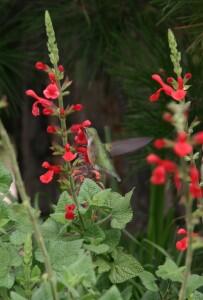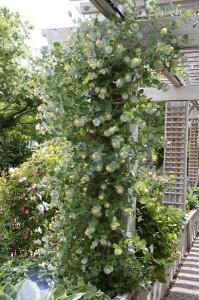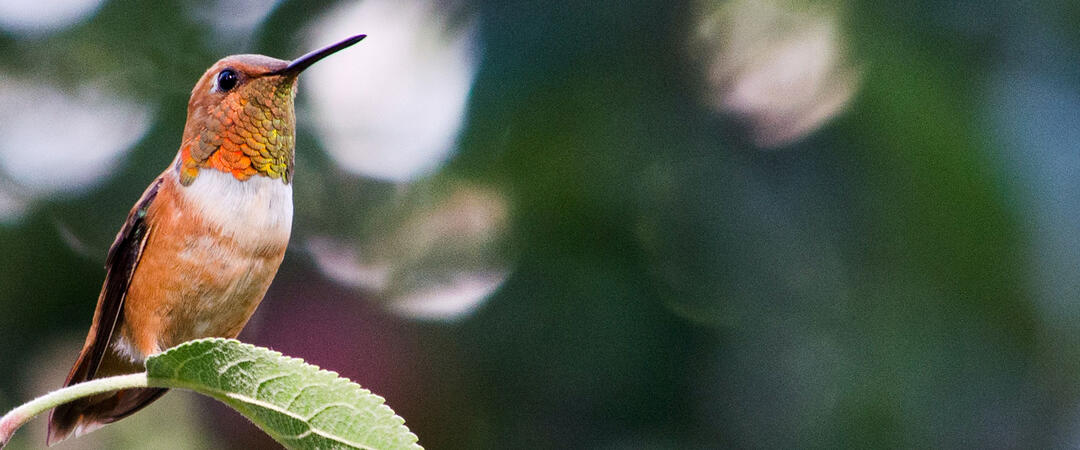Pollinator Summer: Hummingbirds Need More Than Food
It's four pm on a hot July afternoon. The chatter and trill of hummingbirds feeding and (in the case of the males) defending their floral territories echoes through your garden as these aerial dynamos zip from flower to flower, sipping nectar.
Thunder rumbles. The sky goes dark. The clouds open up and rain pours down, flooding the soil. The air temperature drops 15 degrees in ten minutes, and suddenly your yard is silent but for the pounding of the rain.
Where are your hummingbirds now? Tucked away in the densest tree, shrub, or climbing vine they can find, sheltering under a branch or even a thick cluster of leaves.

Habitat: Shelter from Sun and Storm
For these jewels of the air, whose metabolic rates in flight are the highest of all animals except insects, shelter is critical when they cannot feed. In order to hover, beating their wings as fast as 50 or more times per second, hummingbirds burn plant sugars (glucose or fructose) almost as quickly as they can take the in the high-octane fuels.

In fact, research from scientists at the University of Toronto has found that a hummingbird in flight uses energy so quickly that if it were the size of a human, it would need to drink more than one can of high-fructose corn-syrup–sweetened soda every minute to power its hovering flight.
Feed or Starve
With their supercharged metabolisms, hummingbirds need to stay dry and as warm as possible when bad weather hits to keep from starving to death before they can feed again. They can save energy by dropping their core temperature dramatically to that of the air temperature, but even that won't help if they get wet.
Hummingbirds can survive much lower core temperatures than humans: Anna's Hummingbirds have been measured dropping their body temperature as much as 50 degrees Fahrenheit from their normal temperature of 104 degrees!

Hummingbird Shelter Plants
Look around your yard. When it rains or hails, where would the hummers go?

Into that dense honeysuckle, clematis, or Virginia creeper vine climbing up your porch or arbor? Yes, or any vine that has enough canopy that the leaves will keep them dry, and branches where they can perch—above the level that wandering cats might reach them.
(When a hummer has to drop its temperature to stay alive, it takes it about twenty minutes to "awaken." It can't react fast enough to evade a predator like a house cat.)
Into the Cheyenne mock-orange, sand cherry, three-leaf sumac, or lilac? Yes, or any shrub with a dense canopy where it can stay dry and safe from terrestrial predators.

Is there a shade tree you stand under to get out of the rain or spring snow? If so, it's probably a good shelter for hummingbirds, too. Mature conifers, including white spruce and Colorado blue spruce, offer some of the best thermal habitat.
Habitat: To Dwell There
Habitat is so much more than hanging a feeder or planting flowers that provide nectar and pollen. The word comes from the Latin root meaning "they dwell there," a clue to how important shelter is, whether from summer thunderstorms or winter snows.

Habitat is about plants, the structures that feed—and shelter—hummingbirds and other pollinators. Give your yard habitat a check-up today and make sure it provides shelter from the storm.
Join Audubon Rockies, Plant Select®, and High Country Gardens in promoting wildscaping. Be a Habitat Hero.





